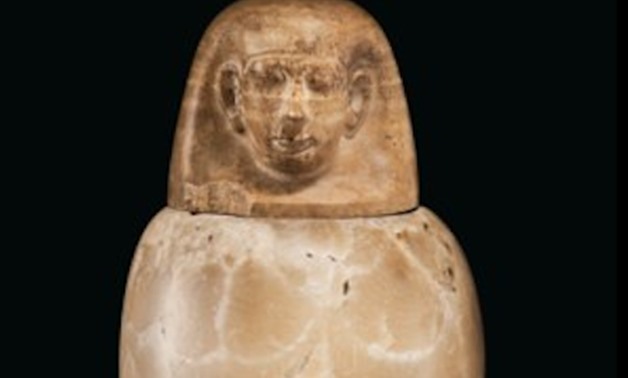
One of the ancient Egyptian Canopic containers set for sale in Christie's Auction House - ET
Christie's to hold auction of Roman, Egyptian Antiquities
By: Mustafa Marie
Mon, Jun. 1, 2020
CAIRO - 1 June 2020: Christie's is preparing for the international auction of many different Roman and Egyptian antiquities, set for July 2-16.
The auction will be held online, due to social-distancing measures as a means to battle the novel coronavirus.
Among the Egyptian antiquities offered for sale is an Egyptian canopic container, dating back to the late period of the 26th Dynasty [664-525 BC]. The price of the container is estimated at $60,000 - $90,000.
Canopic vessels are vessels used by the ancient Egyptians during the mummification process to store and preserve the bowels of the dead for the afterlife. It was usually made of limestone or pottery.
Not all viscera were kept in a single canopic jar; there were four types of canopic jars, one to preserve the stomach, a second one for the intestines, a third one for the lungs, and a fourth one for the liver. It was believed that the deceased will need his body organs in the afterlife.
There were no containers for the heart however, as the Egyptians believed it was the location of the soul and so it was left inside the body.
Canopic vessels in the era of the Old Kingdom were distinguished by being rarely engraved, and had a mediocre lid. In the Middle Ages, inscriptions became more and more common, and the lids came in the form of human heads.
In the 19th Dynasty, the covers of the four containers were made so that each depicted one of the four sons of Horus, the guardians of the organs inside the vessels.
-- Sent from my Linux system.
No comments:
Post a Comment